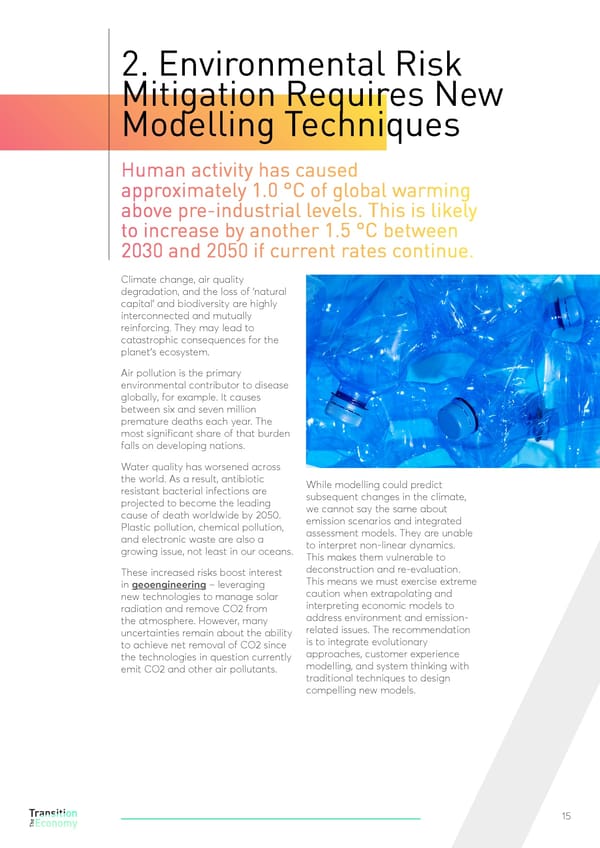2. Environmental Risk Mitigation Requires New Modelling Techniques Human activity has caused approximately 1.0 °C of global warming above pre-industrial levels. This is likely to increase by another 1.5 °C between 2030 and 2050 if current rates continue. Climate change, air quality degradation, and the loss of ‘natural capital’ and biodiversity are highly interconnected and mutually reinforcing. They may lead to catastrophic consequences for the planet’s ecosystem. Air pollution is the primary environmental contributor to disease globally, for example. It causes between six and seven million premature deaths each year. The most significant share of that burden falls on developing nations. Water quality has worsened across the world. As a result, antibiotic‐ While modelling could predict resistant bacterial infections are subsequent changes in the climate, projected to become the leading we cannot say the same about cause of death worldwide by 2050. emission scenarios and integrated Plastic pollution, chemical pollution, assessment models. They are unable and electronic waste are also a to interpret non-linear dynamics. growing issue, not least in our oceans. This makes them vulnerable to These increased risks boost interest deconstruction and re-evaluation. in geoengineering – leveraging This means we must exercise extreme new technologies to manage solar caution when extrapolating and radiation and remove CO2 from interpreting economic models to the atmosphere. However, many address environment and emission- uncertainties remain about the ability related issues. The recommendation to achieve net removal of CO2 since is to integrate evolutionary the technologies in question currently approaches, customer experience emit CO2 and other air pollutants. modelling, and system thinking with traditional techniques to design compelling new models. 15
 The Transition Economy High Res Page 14 Page 16
The Transition Economy High Res Page 14 Page 16